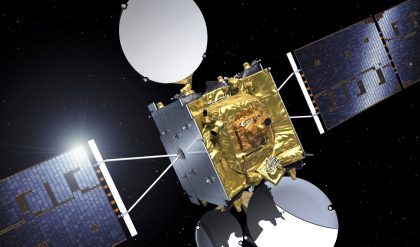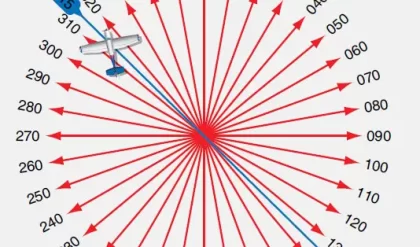Concerning Techniques Mentioned Above
Concerning capacitive sensors, the NASA Langley Research Center is developing sensors based on patterns of conductors sandwiched between insulating layers. The presence of ice over the conductors changes the capacitance, providing a way of sensing ice build-up on aircraft wings. With respect to eddy current sensing, one limitation is that a non-superconducting sense coil responds best to high-frequency excitations, and not at all to dc magnetic fields. This limits the technique to fairly high frequencies and thus low penetration depths, since the skin depth becomes shallower with increasing frequency. One possibility is to use a SQUID (superconducting quantum interference detector) as the sensor, since the SQUID is probably the most sensitive sensor of dc and low-frequency magnetic fields. One disadvantage of the SQUID has been the need for liquid helium for cooling for low-temperature superconductors; with the recent availability of high-temperature superconductors (HTS, above 90 K) and now HTS SQUIDS, cooling can be done with liquid nitrogen or single-stage mechanical coolers. In the area of spatial interferometry, work at Lawrence Livermore National Laboratory replaces the reference surface with a single-mode fiber in a process called phase-shifting diffraction interferometry. A measurement accuracy of 1.44 nm rms is quoted, with a goal of 0.1 nm rms. (HTS SQUID vendor: Conductus.)
THz Technology
With the availability of femtosecond pulsed lasers, Bell Labs has been investigating a technique using 100 fs pulses to pulse an antenna in the range of 0.1 THz to 3.0 THz. The terahertz pulses are sent through the material to be tested, detected, and the received pulse shape is analysed to extract constituent information. This technique may also provide information on thickness.
Nanoscale-Scanning Probe Microscopy
Scanning probe microscopes (SPMs) are used in a wide variety of disciplines, including fundamental surface science, routine surface roughness analysis, and spectacular three-dimensional imaging — from atoms of silicon to micron-sized protrusions on the surface of a living cell [11]. The scanning probe microscope is an imaging tool with a vast dynamic range, spanning the realms of optical and electron microscopes. It is also a profiler with unprecedented 3-D resolution. In some cases, scanning probe microscopes can measure physical properties such as surface conductivity, static charge distribution, localized friction, magnetic fields, and elastic moduli. As a result, applications of SPMs are very diverse. The scanning tunneling microscope (STM), the progenitor of SPMs, utilizes a sharp conductive tip with a bias voltage applied between the tip and the sample. When the tip is within 1 nm of the sample, electrons from the sample begin to tunnel through the 1 nm gap into the tip. If the bias voltage is reversed, the tunneling occurs into the sample. The tunneling current is a function of the separation. Both the tip and the sample must be conductors or semiconductors.
The atomic force microscope (AFM) utilizes a small tip at the end of a cantilever. Forces between the tip and sample cause a deflection in the cantilever, which is translated into a signal. The tip or sample can be scanned covering a large area, producing a topographical map. AFMs can be used on insulators or conductors. AFMs are used in two modes: contact and noncontact. In contact mode, the tip is brought within about 200 pm — about the length of a chemical bond. The electron clouds of the tip and sample atoms interact, netting a repulsive force. For this reason, the contact mode is also called repulsive. Vertical resolution of about 50 pm can be achieved. In noncontact mode, a vibrating cantilever is used in the attractive regime of the van der Waals interactions. The cantilever is typically 2 nm to 20 nm away from the sample surface and has low total force. Noncontact AFM is subsequently less sensitive; thus, sensitive ac detection systems must be employed. The low force does have the advantage of not contaminating the sample surface and is preferred for applications involving silicon wafers and soft or elastic tissues.
In noncontact mode, the cantilever is resonated with a small amplitude. As the tip comes near the sample surface, the resultant force changes the spring constant, translating into a deviation of the resonance frequency. This change in resonance (or vibrational amplitude) reflects changes in the sample topology. Intermittent-contact mode is a combination of noncontact and contact modes and best suited for soft, adhesive, or fragile samples. Contact mode can damage the tip and the sample due to frictional or shear forces and/or create data artifacts from tip/surface adhesion. Noncontact mode produces lower amplitudes and hence lower resolution. Furthermore, surface monolayers of adsorbed gases such as water vapor can produce erroneous results. Intermittent-contact mode avoids these pitfalls by placing the tip in contact with the surface, providing high resolution and then removing the tip to prevent dragging and/or lateral forces. The cantilever is resonated via a piezoelectric crystal (50 kHz to 500 kHz in ambient, 5 kHz to 40 kHz in fluids) overcoming the tip/sample adhesion forces. In magnetic force microscopy (MFM), the noncontact mode is employed using a tip coated with a ferromagnetic film. Both magnetic and van der Walls interactions are present, but at larger tip/sample separations, the magnetic forces dominate. Multiple scans as a function of tip/sample distance allow differentiation of magnetic forces and topographic information. Magnetic domain structures are resolved to 50 nm via this technique. Current applications of MFM include data storage devices, imaging of micromagnetic structures, IC analysis, imaging of magneto tactic bacteria, and magnetic geophysics. Lateral force microscopy (LFM) is used to generate profiles of changes in surface friction and/or height variations. The probe tip is deflected laterally, indicating some sort of twist. Electronics measure the cantilever deflection.
To differentiate between the two effects, LFM and AFM images should be obtained simultaneously. Phase detection microscopy or phase imaging is an extension of intermittent-contact AFM. It utilizes the phase lag between the driving frequency (cantilever) and the output signal frequency, generating a map of specific mechanical properties such as adhesion, elasticity, and friction. Identification of contaminants, composite materials, and regions of hardness and low surface adhesion can be obtained at the nanometer scale. Additional techniques include force modulation microscopy, where a periodic signal is applied to the cantilever, generating a map of the sample’s elastic modulus and/or contaminants; electrostatic force microscopy, where a charged tip is scanned over the sample, revealing the locally charged domains generating a map of the charge carrier density; scanning capacitance microscopy, where a charged tip, kept at a constant tip/sample distance, generates a map of capacitance correlated information such as dielectric material thickness and subsurface charge carrier distributions (i.e., dopant profiles of ion implanted semiconductors); thermal scanning microscopy, where the tip in noncontact mode and a bimetal cantilever are used to map the thermal conductivity of the sample. (Vendors: Park Scientific Instruments; Digital Instruments; Oxford Instruments.)





Comments are closed.